CenturyLink 2015 Annual Report Download - page 191
Download and view the complete annual report
Please find page 191 of the 2015 CenturyLink annual report below. You can navigate through the pages in the report by either clicking on the pages listed below, or by using the keyword search tool below to find specific information within the annual report.-
 1
1 -
 2
2 -
 3
3 -
 4
4 -
 5
5 -
 6
6 -
 7
7 -
 8
8 -
 9
9 -
 10
10 -
 11
11 -
 12
12 -
 13
13 -
 14
14 -
 15
15 -
 16
16 -
 17
17 -
 18
18 -
 19
19 -
 20
20 -
 21
21 -
 22
22 -
 23
23 -
 24
24 -
 25
25 -
 26
26 -
 27
27 -
 28
28 -
 29
29 -
 30
30 -
 31
31 -
 32
32 -
 33
33 -
 34
34 -
 35
35 -
 36
36 -
 37
37 -
 38
38 -
 39
39 -
 40
40 -
 41
41 -
 42
42 -
 43
43 -
 44
44 -
 45
45 -
 46
46 -
 47
47 -
 48
48 -
 49
49 -
 50
50 -
 51
51 -
 52
52 -
 53
53 -
 54
54 -
 55
55 -
 56
56 -
 57
57 -
 58
58 -
 59
59 -
 60
60 -
 61
61 -
 62
62 -
 63
63 -
 64
64 -
 65
65 -
 66
66 -
 67
67 -
 68
68 -
 69
69 -
 70
70 -
 71
71 -
 72
72 -
 73
73 -
 74
74 -
 75
75 -
 76
76 -
 77
77 -
 78
78 -
 79
79 -
 80
80 -
 81
81 -
 82
82 -
 83
83 -
 84
84 -
 85
85 -
 86
86 -
 87
87 -
 88
88 -
 89
89 -
 90
90 -
 91
91 -
 92
92 -
 93
93 -
 94
94 -
 95
95 -
 96
96 -
 97
97 -
 98
98 -
 99
99 -
 100
100 -
 101
101 -
 102
102 -
 103
103 -
 104
104 -
 105
105 -
 106
106 -
 107
107 -
 108
108 -
 109
109 -
 110
110 -
 111
111 -
 112
112 -
 113
113 -
 114
114 -
 115
115 -
 116
116 -
 117
117 -
 118
118 -
 119
119 -
 120
120 -
 121
121 -
 122
122 -
 123
123 -
 124
124 -
 125
125 -
 126
126 -
 127
127 -
 128
128 -
 129
129 -
 130
130 -
 131
131 -
 132
132 -
 133
133 -
 134
134 -
 135
135 -
 136
136 -
 137
137 -
 138
138 -
 139
139 -
 140
140 -
 141
141 -
 142
142 -
 143
143 -
 144
144 -
 145
145 -
 146
146 -
 147
147 -
 148
148 -
 149
149 -
 150
150 -
 151
151 -
 152
152 -
 153
153 -
 154
154 -
 155
155 -
 156
156 -
 157
157 -
 158
158 -
 159
159 -
 160
160 -
 161
161 -
 162
162 -
 163
163 -
 164
164 -
 165
165 -
 166
166 -
 167
167 -
 168
168 -
 169
169 -
 170
170 -
 171
171 -
 172
172 -
 173
173 -
 174
174 -
 175
175 -
 176
176 -
 177
177 -
 178
178 -
 179
179 -
 180
180 -
 181
181 -
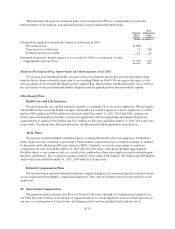 182
182 -
 183
183 -
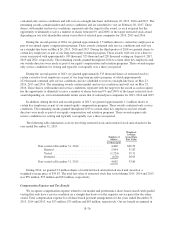 184
184 -
 185
185 -
 186
186 -
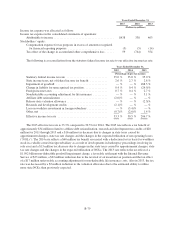 187
187 -
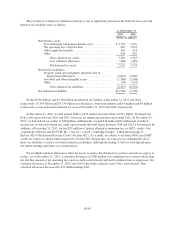 188
188 -
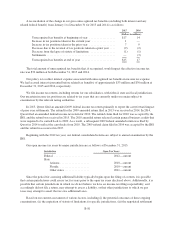 189
189 -
 190
190 -
 191
191 -
 192
192 -
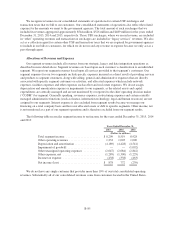 193
193 -
 194
194 -
 195
195 -
 196
196 -
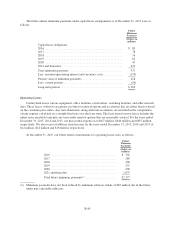 197
197 -
 198
198 -
 199
199 -
 200
200 -
 201
201 -
 202
202
 |
 |
Product and Service Categories
We categorize our products, services and revenues among the following four categories:
•Strategic services, which include primarily high-speed Internet, MPLS (which is a data networking
technology that can deliver the quality of service required to support real-time voice and video), private
line (including special access), Ethernet, colocation, hosting (including cloud hosting and managed
hosting), video (including our facilities-based video services, which we now offer in 16 markets), VoIP
and Verizon Wireless and other ancillary services;
•Legacy services, which include primarily local and long-distance voice services, including the sale of
UNEs, switched access and Integrated Services Digital Network (“ISDN”) services (which use regular
telephone lines to support voice, video and data applications);
•Data integration, which includes the sale of telecommunications equipment located on customers’
premises and related professional services, such as network management, installation and maintenance
of data equipment and building of proprietary fiber-optic broadband networks for our governmental
and business customers; and
•Other operating revenues, which consist primarily of CAF support payments, USF support payments
and USF surcharges. We receive federal support payments from both CAF Phase 1 and CAF Phase 2
programs, and support payments from both federal and state USF programs. These support payments
are government subsidies designed to reimburse us for various costs related to certain
telecommunications services, including the costs of deploying, maintaining and operating voice and
high-speed Internet infrastructure in high-cost rural areas where we are not able to recover our costs
from our customers. USF surcharges are the amounts we collect based on specific items we list on our
customers’ invoices to fund the FCC’s universal service programs. We also generate other operating
revenues from leasing and subleasing of space in our office buildings, warehouses and other properties.
Because we centrally manage the activities that generate these other operating revenues, these revenues
are not included in our segment revenues.
B-83
